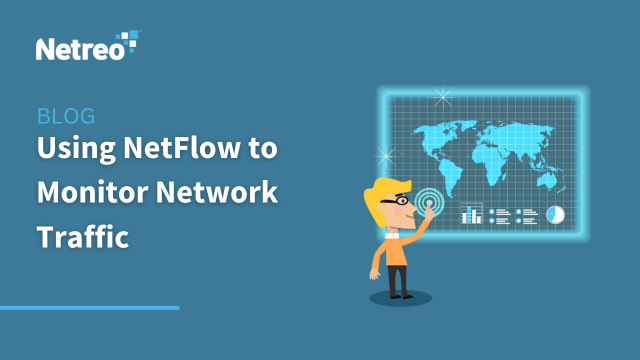
In the intricate landscape of contemporary network management, comprehensive and insightful tools have never been more critical. One tool that stalwartly deciphers the complexities of network traffic is NetFlow. Developed by Cisco Systems, NetFlow is a robust protocol that serves as a cornerstone for understanding, monitoring, and optimizing the flow of data within a network.
In this post, we explore how NetFlow works, its architecture, components and applications. We’ll also cover the transformative impact of the tool on digital communication.
NetFlow is a protocol designed to collect, record, and analyze IP network traffic in a systematic and detailed manner. The protocol operates by capturing key information about network flows, where a flow is defined as a unidirectional sequence of packets sharing common characteristics, such as source and destination IP addresses, ports, and protocol types. This granular data collection gives network administrators deep insights into the nature and dynamics of traffic traversing their infrastructure.
Flow Generation – NetFlow begins by collecting flows on network devices, such as routers, switches, and other compatible hardware. A flow is a unidirectional sequence of packets with common characteristics, including source and destination IP addresses, ports and protocols.
Flow Caching – As packets traverse the network device, information about each flow is temporarily stored in a flow cache. The flow cache keeps track of details, such as packet counts, byte counts, and timestamps for each flow. The data in the flow cache provides a snapshot of network activity.
Flow Export – Periodically or based on predefined conditions, the network device exports the flow records from the flow cache to a designated NetFlow collector. This export process involves packaging the information into NetFlow records for transmission.
NetFlow Records – Records contain key details about each flow, including source and destination IP addresses, source and destination ports, protocol type, packet and byte counts, and timestamps. These records serve as the foundation for analysis and monitoring.

NetFlow Collector – The collector is a centralized system or tool responsible for receiving, storing and analyzing the NetFlow records. Collectors may be standalone devices or software applications running on servers.
Exporter – The exporter is the network device (router, switch, etc.) responsible for generating NetFlow records by extracting information from the flow cache and sending those records to the designated collector.
Collector – The collector receives NetFlow records from multiple exporters. It aggregates, stores, and organizes the data for analysis.
Flow Cache – The flow cache is a temporary storage mechanism on the network device where flow records – a snapshot of current network activity – are held before being exported to the collector.
Flow Identification – NetFlow identifies flows based on specific criteria, such as source and destination IP addresses, ports, and protocol types. Each unique flow is tracked and recorded.
Data Sampling – NetFlow can employ sampling to reduce the volume of data exported. Instead of analyzing every packet, you can select a subset for analysis. Sampling helps minimize the impact on device performance.
Flow Timeout – Flows have a defined timeout period. If a flow is inactive for a specified duration, the flow is considered complete. The flow record is then exported to the collector. This timeout process ensures that ongoing, long-term connections are continuously tracked.
NetFlow Versions – Evolving through various versions, NetFlow v5 and v9 are most widely used. The choice of version may depend on device capabilities and the desired level of detail in flow records.

In summary, the decision to choose NetFlow or alternative solutions depends on the specific goals, requirements, and characteristics of the network environment in question. Evaluating factors, such as network complexity, security needs, and resource availability can help you select the most appropriate monitoring solution.
NetFlow stands as a robust and indispensable protocol for network management. Offering a sophisticated framework for monitoring traffic, the choice is ideal for today’s complex digital ecosystems. As we navigate through the intricacies of NetFlow, several observations emerge, underscoring its significance and potential impact on network operations.
This post was written by Verah Ombui. A passionate technical writer and DevOps practitioner, Verah believes in writing the best content on DevOps and IT technologies. Her mission remains consistent: learn new technologies with hands-on practice and teach the world with engaging content. She has good exposure to DevOps technologies, such as Terraform, AWS Cloud, Microsoft Azure, Ansible, Kubernetes, Docker, Jenkins, Linux, etc.